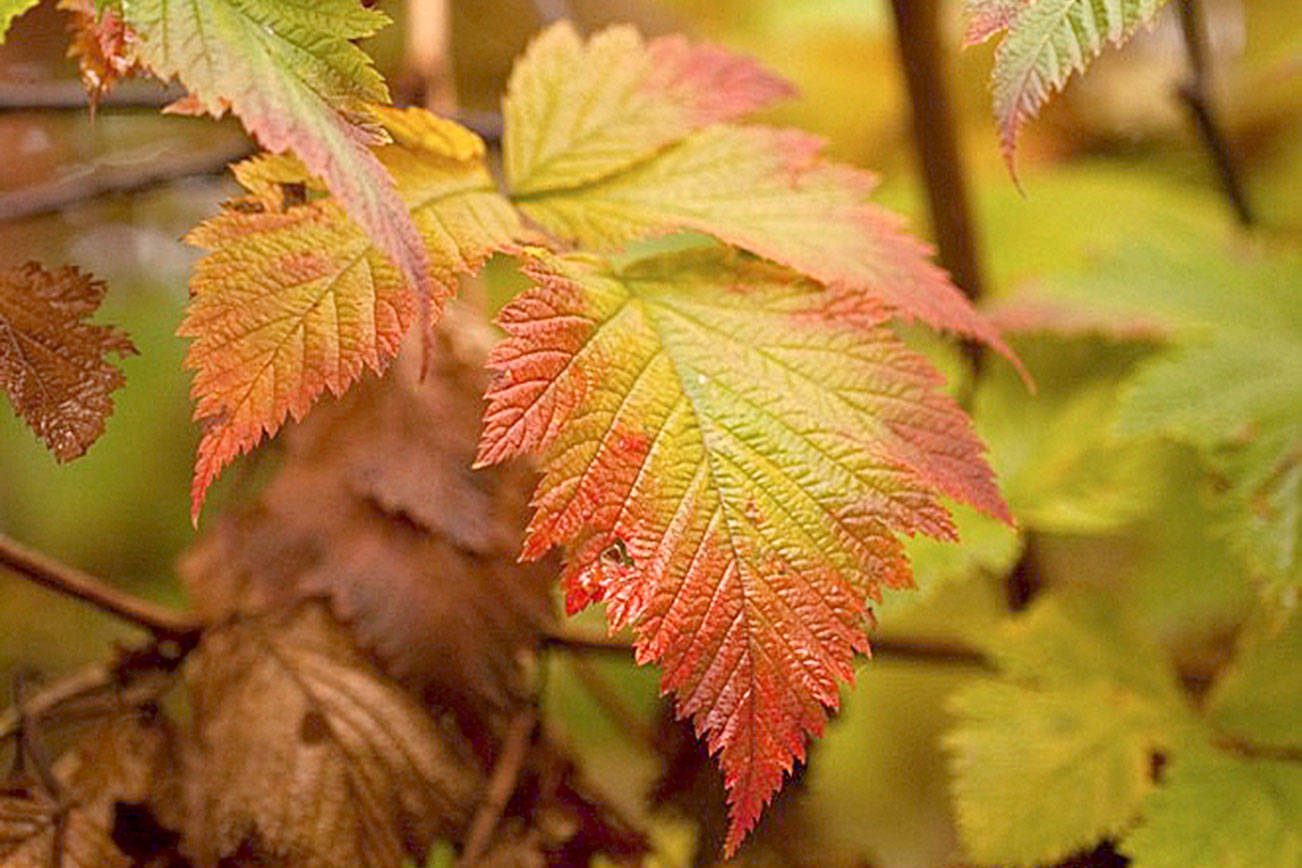The leaves are falling! Before you hang up your gardening gloves for the season, take steps to bring this year’s vegetable garden to a satisfying close and get ready for next year.
October
• Harvest onions when tops fall over. Cure in a warm, dry place until the necks wither and skins tighten (2-4 weeks) and store.
• Harvest winter squash when skins are hard and cannot be punctured with a thumbnail. Cure in a warm, dry place for 2 weeks and store.
• Harvest potatoes after the vines die. Cure at 45 to 60 degrees until skins toughen (about two weeks). Cull damaged tubers and store.
• Harvest carrots, beets and parsnips and store. Although some gardeners leave root crops in the ground as a convenient means of cold storage, this practice can contribute to the establishment of pests such as carrot rust fly.
• If frost threatens, harvest ripe, nearly ripe and mature green tomatoes (glossy, whitish green, almost full size) and store.
• Harvest apples when seeds turn brown and pears when full-sized but hard and store.
• Remove annual vegetables that are no longer producing; they are sources of insect pests and diseases for future plantings.
• Consider leaving summer and fall-planted kale, lettuce and Swiss chard in the ground since they can overwinter and take off when temperatures warm in early spring.
• Do not remove perennial vegetables (such as rhubarb, asparagus or artichoke) or herbs (such as oregano and rosemary) unless weakened or diseased. Cut back perennial herbs to about 2 inches above the soil level once they are no longer producing usable leaves.
• Prune out second-year raspberry and blackberry canes (canes that just fruited).
• Plant garlic. Set cloves with pointed end up at least 2 inches below the soil surface.
November
• Clean up fallen fruit, leaves and other debris around fruit trees and berries. Do not compost diseased plant material.
• Clean and coil hoses; empty and stack cages and containers.
• Mulch garden beds with leaves. The leaves will help protect soil from erosion and compaction and suppress weeds. They also will break down over time to provide soil nutrients.
• Test garden soil. Because changing the pH takes time, apply lime (if soil is too acidic for intended use) or sulfur (if soil is too alkaline) in the fall as indicated by the soil test. Do not add chemical fertilizers at this time; apply them in the spring before planting.
• Clean and sharpen garden tools before storing for the winter.
Late January, February
• Prune fruit trees while dormant. Do not prune during freezing weather.
• Prune established blueberry bushes (3 years or older) while dormant. Remove broken or diseased branches, weak shoots and branches low to ground. Remove two or three older canes (5 years or older) and keep two or three of the strongest new canes (that emerged last summer) to take their place. Remove all other canes that emerged last summer.
• If aphids, mites or scale have been a past problem, apply horticultural oils to fruit trees and blueberry bushes.
Do not apply oils if plants are wet, the temperature is below 40 degrees or rain is likely in next 24 hours.
• Remove dead or damaged raspberry canes. Thin second-year raspberry canes to five canes per square foot.
• Start cool weather vegetables indoors about six to eight weeks before the last frost is expected.
• Mow or chop cover crops before they set seed. Allow leaves and stems to dry (about one week) and dig them in, if the soil is dry enough to be worked.
When turning under a cover crop of cereal grains, grasses, or Brassica family members, wait two to three weeks before subsequent planting.
• Of note, as the rains return, avoid walking directly on garden beds because it can damage the soil structure. If a task necessitates stepping into the garden, stand on a wide board to distribute your weight and decrease soil compaction.
Jeanette Stehr-Green and Judy English are WSU-certified Clallam County Master Gardeners.


